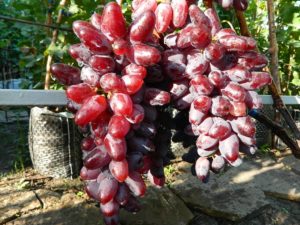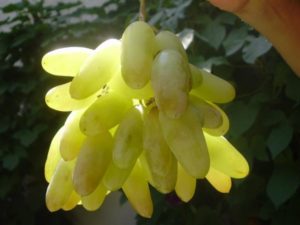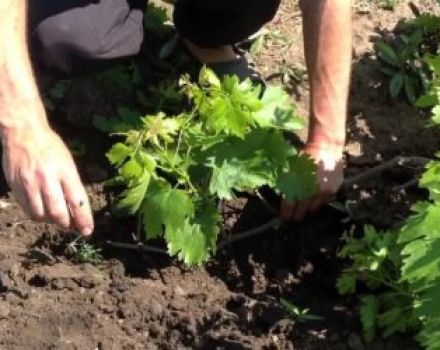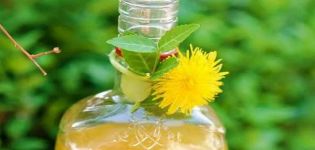Description and characteristics of the grape variety Augustine, planting and care, growing regions
The Augustine grape variety has a good ability to withstand low temperatures, so it is grown not only in the southern regions. Bunches with berries begin to ripen early, and their use is possible without processing. Leaving does not require a lot of time and effort. Subject to certain conditions, it will be possible to preserve a large and sweet harvest for many years.
Breeding history
Augustine grapes bred by breeders in Bulgaria, in the city of Plevna, as a result of crossing Pleven and Vilar Blanc varieties. Table grapes also have other names: Pleven Stable, Phenomenon. The resulting hybrid is distinguished by the best characteristics, which are determined by an increase in the number of crops, the palatability of the berries and the ability to withstand adverse factors.
Description of the variety
Description of the Pleven Sustainable grape variety is not complete without mentioning the following characteristics:
- refers to early maturing groups of plants, from the moment the ovaries are formed to the ripening of berries, an average of 118 days pass;
- harvesting begins in mid-August.
- bushes of the Phenomenon variety are vigorous;
- bisexual flowers are formed on the branches;
- conical bunches, their weight reaches 700 g;
- berries in clusters are formed large, of the same size, the weight of each of them is 6-7 g;
- the color of a thin but dense skin, greenish yellow;
- the pulp is dense, sweet and juicy, there are few seeds inside, but they are quite large.
Augustine Muscat variety has a high sugar content, up to 20%. The level of sugar content does not decrease even when exposed to unfavorable factors (cold, rains).
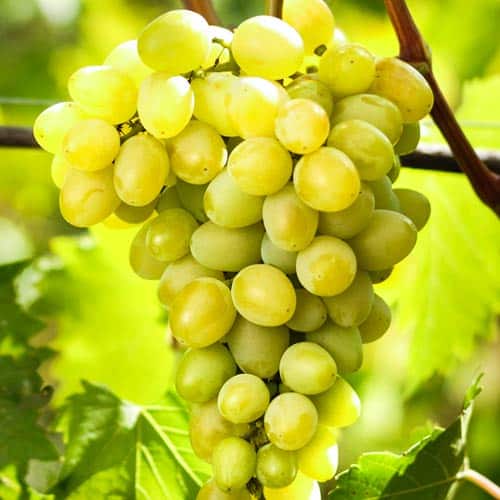
Advantages and disadvantages
The advantages of the Augustine variety include the following characteristics:
- the ability to harvest early;
- abundant fruiting (up to 60 kg per bush);
- the ripe crop hangs on the branches for up to two weeks, without cracking or crumbling;
- the ability to withstand frosts down to -25 degrees;
- fruits are well transported over long distances;
- berries are rarely damaged by wasps;
- sufficiently high resistance to fungal infections;
- seedlings after planting quickly adapt to a new place.
The disadvantages of the Augustine variety are:
- the presence of large seeds inside the berries up to 6 pieces;
- prolonged rains lead to cracking and rotting of the fruit;
- not suitable for making fruit and berry wines;
- do not keep ripe berries on the branches for more than 14 days, otherwise they will begin to crumble;
- in case of improper care, the berries become small and begin to crumble.
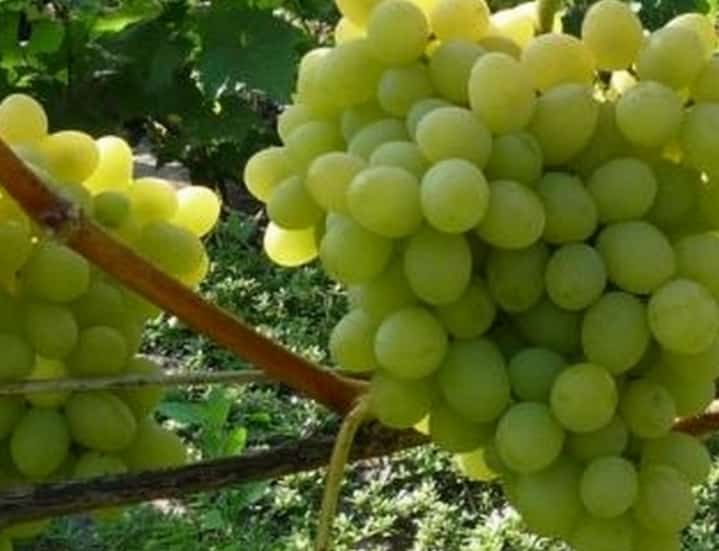
Before planting a plant, you need to choose the right place and prepare the soil. To maintain yields, you need to regularly prune the vines.
Distinctive characteristics
It is possible to distinguish Augustine grapes from other varieties by the following characteristics:
- yellow-green berries with a whitish shade, almost transparent;
- the berries are large, have an oval-oblong shape, there are large bones inside;
- berries form a bunch of conical shape, do not fit tightly to each other;
- the leaves are large, dark green in color, practically without cuts, so the edges are more round;
- during the ripening period, the vine acquires a red-brown speckled color.
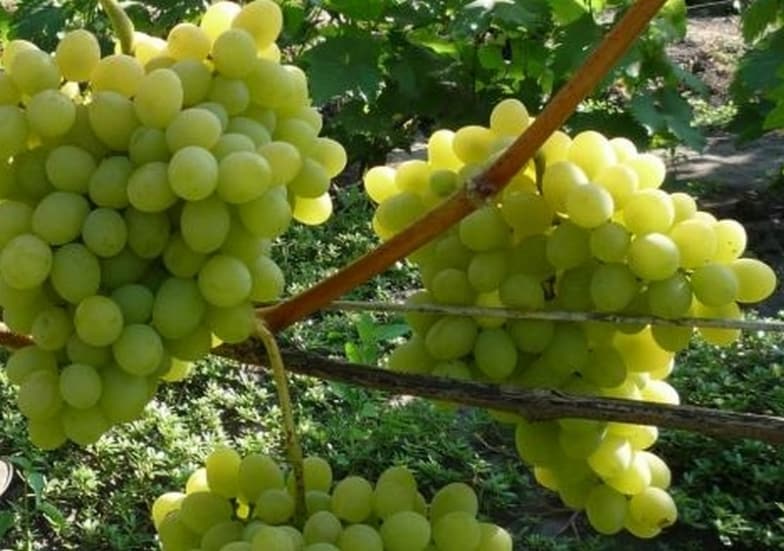
The fruits are intended for fresh consumption and do not require additional processing.
How much matures?
Grape berries of the Augustine variety begin to ripen early. From the moment of flowering, 117-121 days pass. If spring came early and was warm, then the harvest begins in August.
Planting tips
They start planting seedlings in spring or autumn. Working in summer or autumn has advantages and disadvantages:
- Seedlings planted in spring take root better and adapt faster to a new place, as there is a lot of light and heat. During this period, it is important to provide the seedlings with sufficient and regular watering.
- In the fall, seedlings are planted long before the onset of the expected frost. The plant should be provided with a covering material that will keep branches and roots from the winter cold. In the spring, these seedlings quickly enter the growth phase.
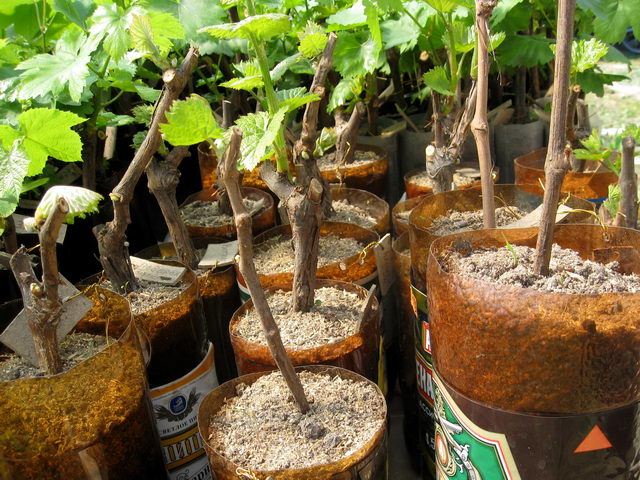
For planting, choose an area that is most heated by the sun. It is better to plant on the southern side of the buildings so that the plant is protected from through northern winds. The Augustine grape prefers to grow in moist, fertile, loose soil.
Rules to be followed when planting grapes:
- Dig holes 70 cm deep at a distance of 3 meters.
- Drainage from gravel or expanded clay is laid out on the bottom. The layer should be 10 cm.
- Then a mixture of soil with fertilizers is poured, after which there is a regular layer of soil.
- The pits are well watered with warm water.
- The seedlings are covered with earth to the root collar, slightly compacted and watered again.
A circular groove is dug around each planted bush. It is necessary for fertilization and irrigation.
Grape Care Augustine
Caring for Augustine grapes is simple and does not require a lot of time and effort.
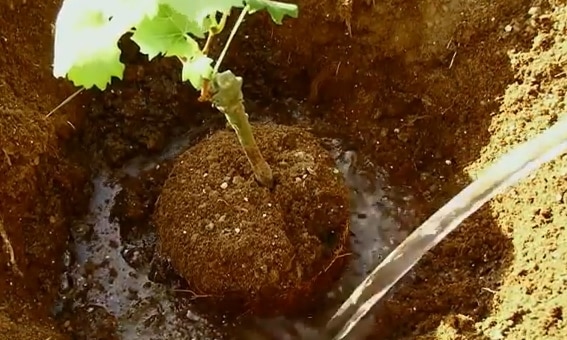
Watering
The Augustine grape variety needs regular watering, but you should not allow excessive waterlogging of the soil. Most of all, the plant needs watering in early spring and during the flowering period. Water intended for irrigation must be warm. Do not pour it at the root. Experienced gardeners dig a circular trench into which they pour water.
Fertilization
If the planting was carried out according to all the rules, then the fertilizers that were laid in the pit will be enough for the next three years. In the first autumn, a layer of humus is additionally placed at the base of the trunk. Humus will keep you warm and nourished in the spring.
As the grapes grow, top dressing is carried out three times per season. In early spring, fertilizers are applied, which contain nitrogen. Components containing superphosphate are required prior to flowering. As soon as the berries begin to ripen, it is necessary to feed the plant with potassium-phosphorus components.

Pruning
Lateral shoots grow at a high speed, so it is necessary to control the growth of the bush.If you do not carry out timely pruning, the yield will decrease, and the berries will become small in size and lose their taste. It is better to cut the bush in the fall, when the sap flow stops. Up to 10-12 eyes are left on each branch.
In the spring, they begin to remove damaged and dry branches, which will further slow down the development of vines.
It is recommended to remove excess greens. It is enough to leave 5-6 leaves above each bunch. Thinning of the green mass promotes better penetration of light and air to all parts of the plant.
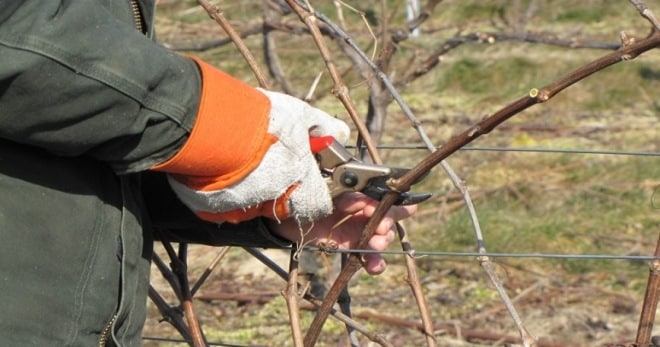
Shelter for the winter
The plant can withstand frosts down to -24 degrees, but it is better to take care of shelter for the winter. For this, the grape lashes are freed from the support, tied and laid on the ground. Then they cover it with a film, cover it with a small layer of earth and mulch with straw or spruce branches. It is recommended to start organizing a shelter in dry, clear weather.
In this case, the air temperature should not be more than 0 degrees. Otherwise, a greenhouse effect will be created inside the film, which harms the branches of the grapes. The shelter is removed in spring, when the threat of frost is over, the snow melts and warm weather sets in.
Breeding varieties
Reproduction of the Augustine variety is possible in three ways:
- It is not recommended to grow grapes with seeds, as the original characteristics are lost. If, nevertheless, it was decided to plant grapes with seeds, then the first days of June are considered the best dates. Vaccination is indispensable. Fruiting begins no earlier than five years later.
- The plant propagates easier and faster by cuttings. Each cuttings intended for planting must have at least four eyes.
- Propagated by culture and layering. The method is suitable for those who already have the Phenomenon variety growing on the site. In the spring, the largest whip is buried in the ground.
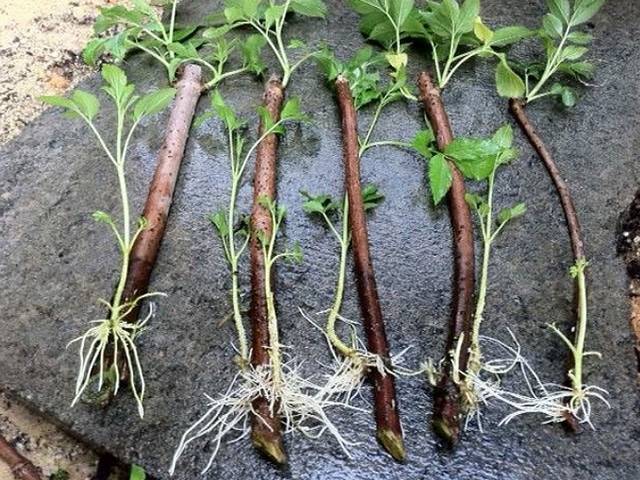
When creating optimal conditions for the development of cuttings and layering of fruiting, it will be possible to wait two years later.
In which regions is it better to grow?
The Augustine grape is of southern origin, but over time it spread to the regions of the middle belt. Due to the characteristics, cultivation is possible in Siberia.
Diseases and pests
The Augustine variety is resistant to many fungal infections and staunchly resists the attack of insect pests. But experienced gardeners are advised to carry out preventive treatment of the bushes. It is enough to spray the plant with a solution of soda or potassium permanganate.
The most common pest that sometimes damages the plant is the nailworm. If control measures are not taken in time, the pest leads to a decrease in yield. A sulfur solution is suitable as a preventive measure. The component is diluted in a bucket of water, and the plant is sprayed with the finished solution in early spring.
